I'm working on a word game and I was dynamically creating the textures for the letter tiles when the game loads, comprising of a background image and a font.
To do this I was drawing pixmaps onto pixmaps, this was all fine until I started working on scaling. The font scaling on the pixmaps was terrible, even with bilinear filtering turned on (left image below) even though my scaled fonts were looking pretty good elsewhere.
So I decided to get round this I'd use a frame buffer, render everything to that and then copy that out to a pixmap and create a texture from that. That way I could use the gpu filtering and it should look exactly the same as my other fonts, (middle image below) but it still didn't look quite as nice as the other fonts. A slight dark line round the outside, it looks like the alpha blending isn't working properly.
I then tried drawing straight over the tiles with the font at runtime to make sure it wasn't my imagination, and this definitely looks better with smooth blending into the image below (right image below), but this impacts my frame rate quite a lot.

So my question is, why is drawing to the frame buffer not producing the same result as when I draw to the screen? Code below.
Texture tx = Assets.loadTexture("bubbles/BubbleBlue.png");
tx.setFilter(TextureFilter.Linear, TextureFilter.Linear);
SpriteBatch sb = new SpriteBatch();
FrameBuffer fb = new FrameBuffer(Format.RGBA8888,
LayoutManager.getWidth(), LayoutManager.getHeight(), false);
fb.begin();
sb.begin();
sb.draw(tx, 0, 0, LetterGrid.blockWidth, LetterGrid.blockHeight);
Assets.candara80.font.getRegion().getTexture()
.setFilter(TextureFilter.Linear, TextureFilter.Linear);
Assets.candara80.setSize(0.15f);
TextBounds textBounds = Assets.candara80.getBounds(letter);
Assets.candara80.drawText(sb, letter,
(LetterGrid.blockWidth - textBounds.width) / 2,
(LetterGrid.blockHeight + textBounds.height) / 2);
sb.end();
Pixmap pm = ScreenUtils.getFrameBufferPixmap(0, 0,
(int) LetterGrid.blockWidth, (int) LetterGrid.blockHeight);
Pixmap flipped = flipPixmap(pm);
result = new Texture(flipped);
fb.end();
pm.dispose();
flipped.dispose();
tx.dispose();
fb.dispose();
sb.dispose();